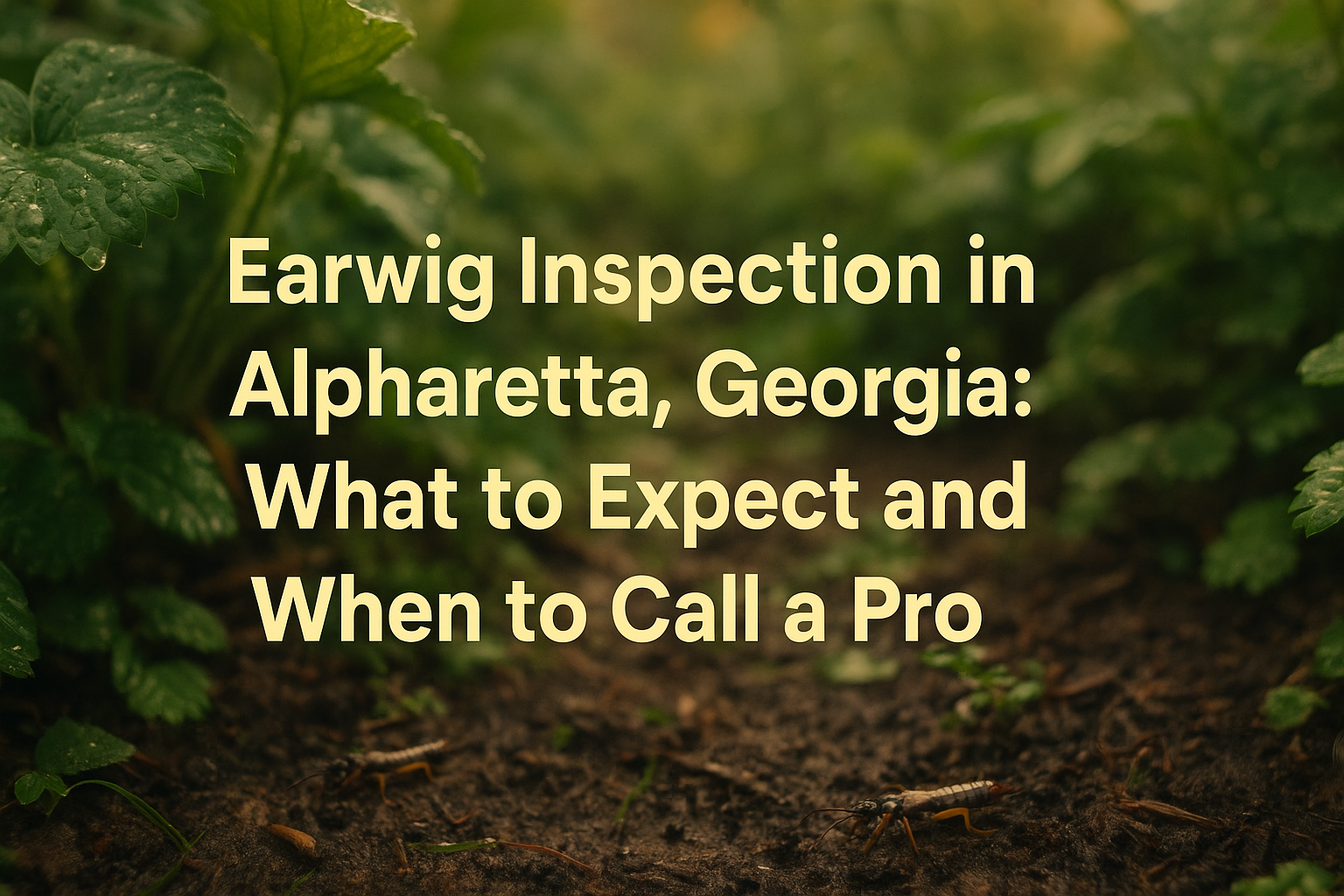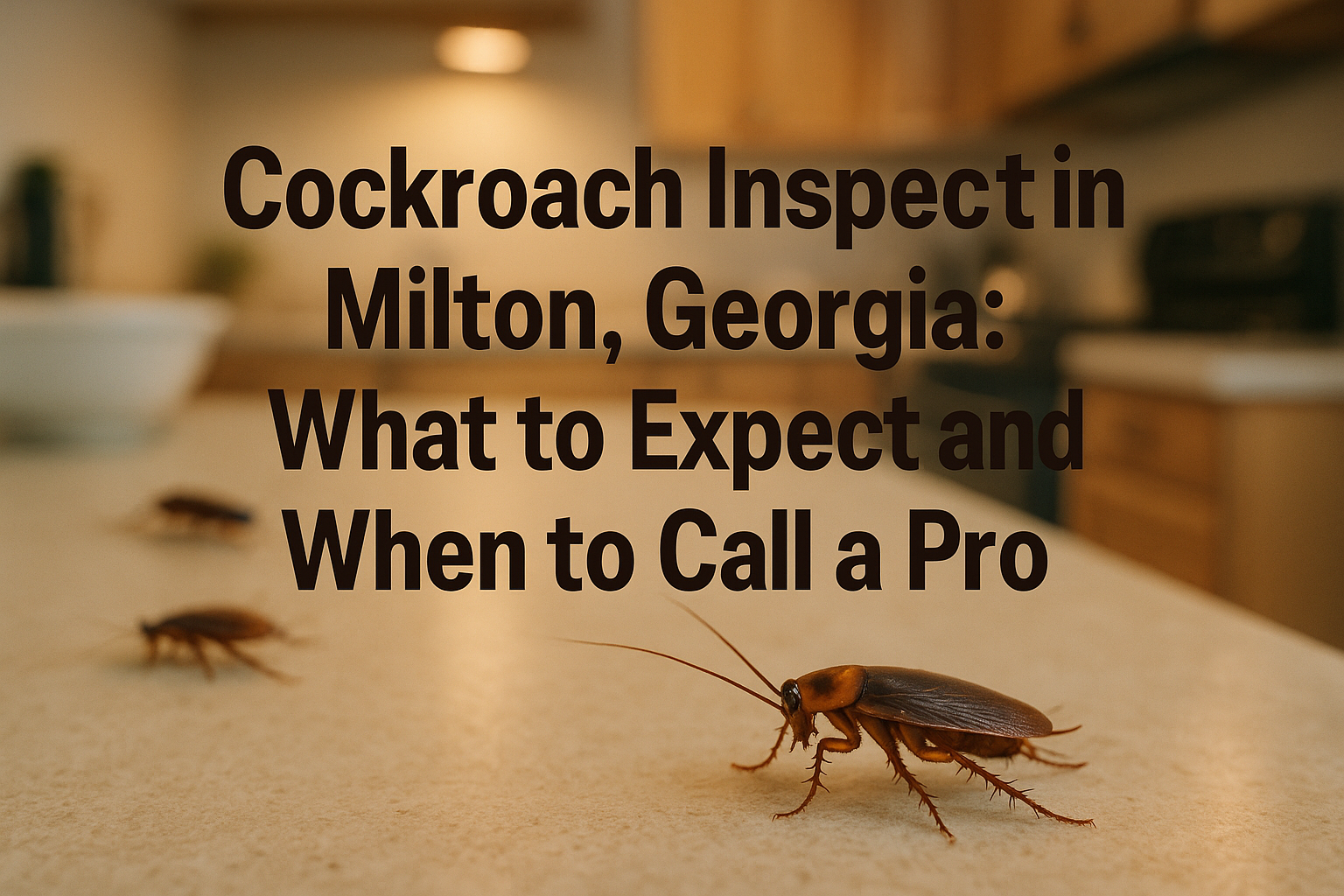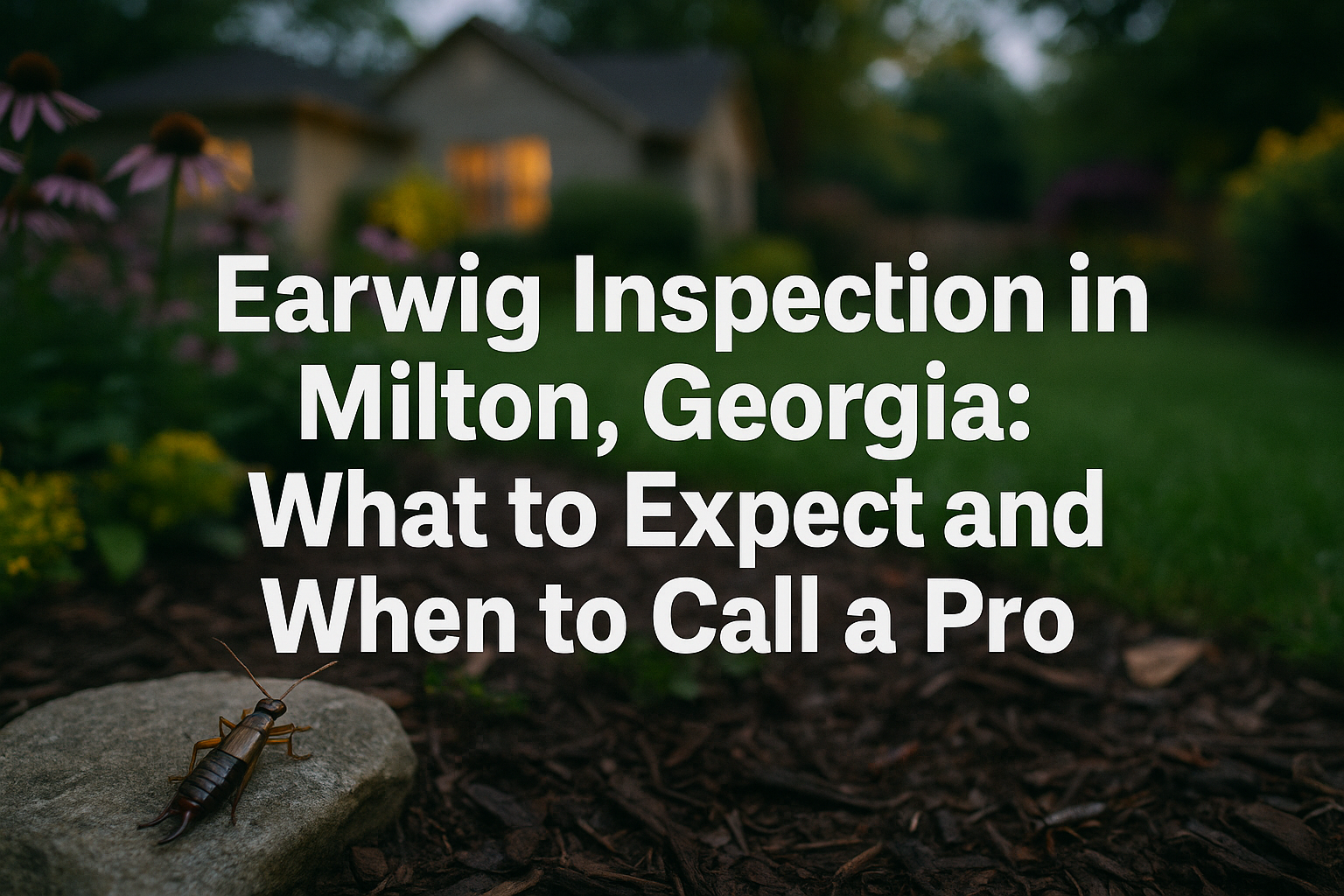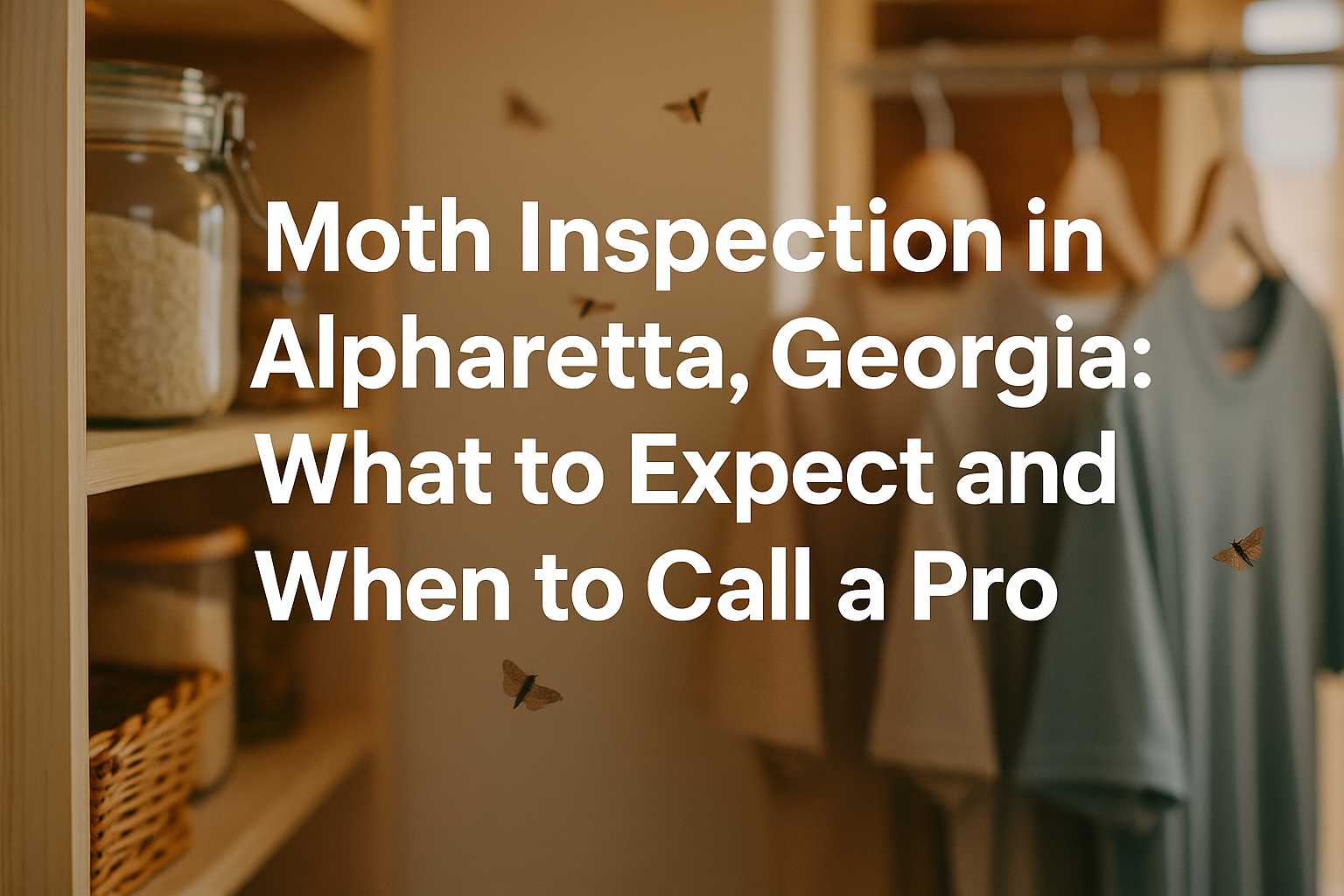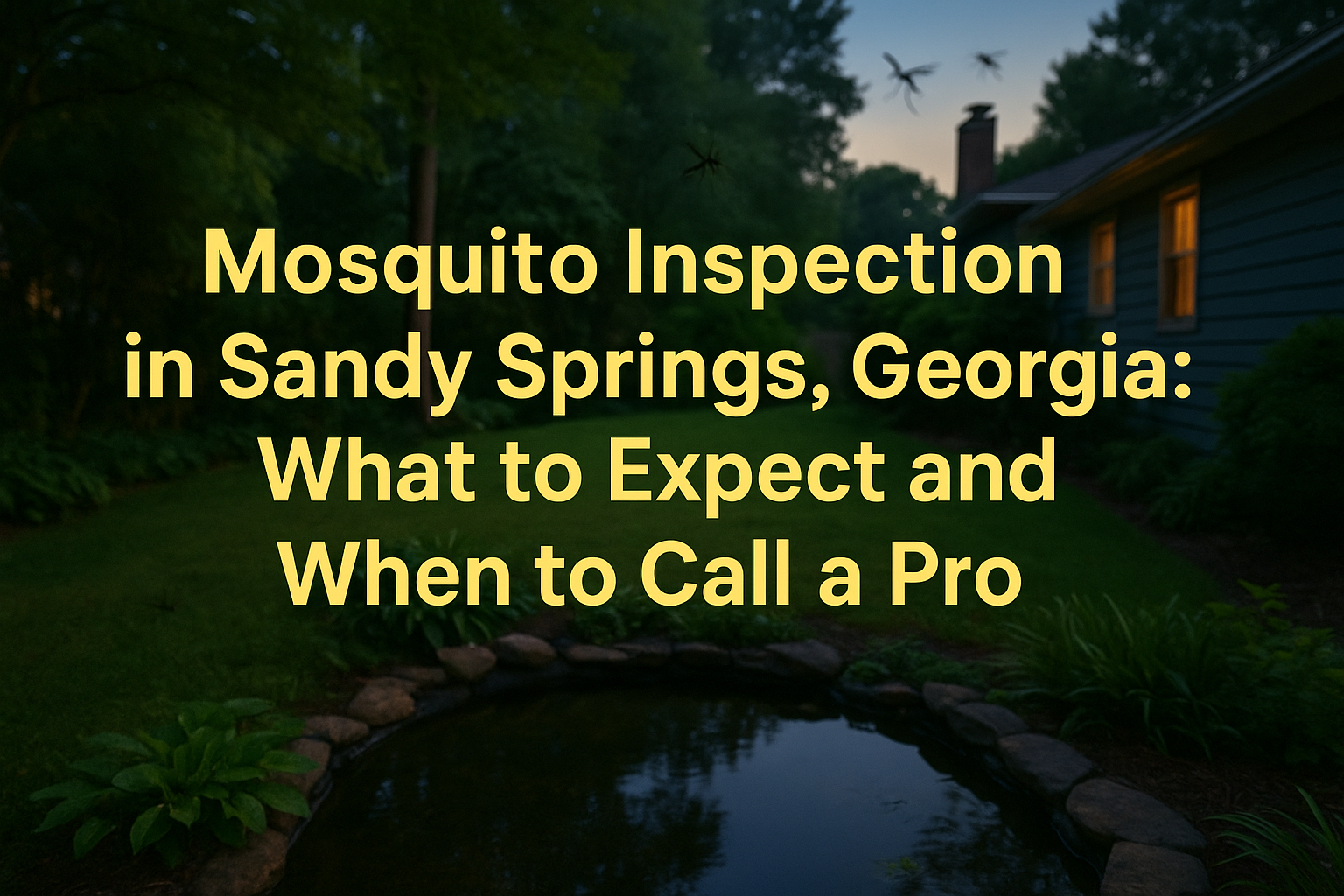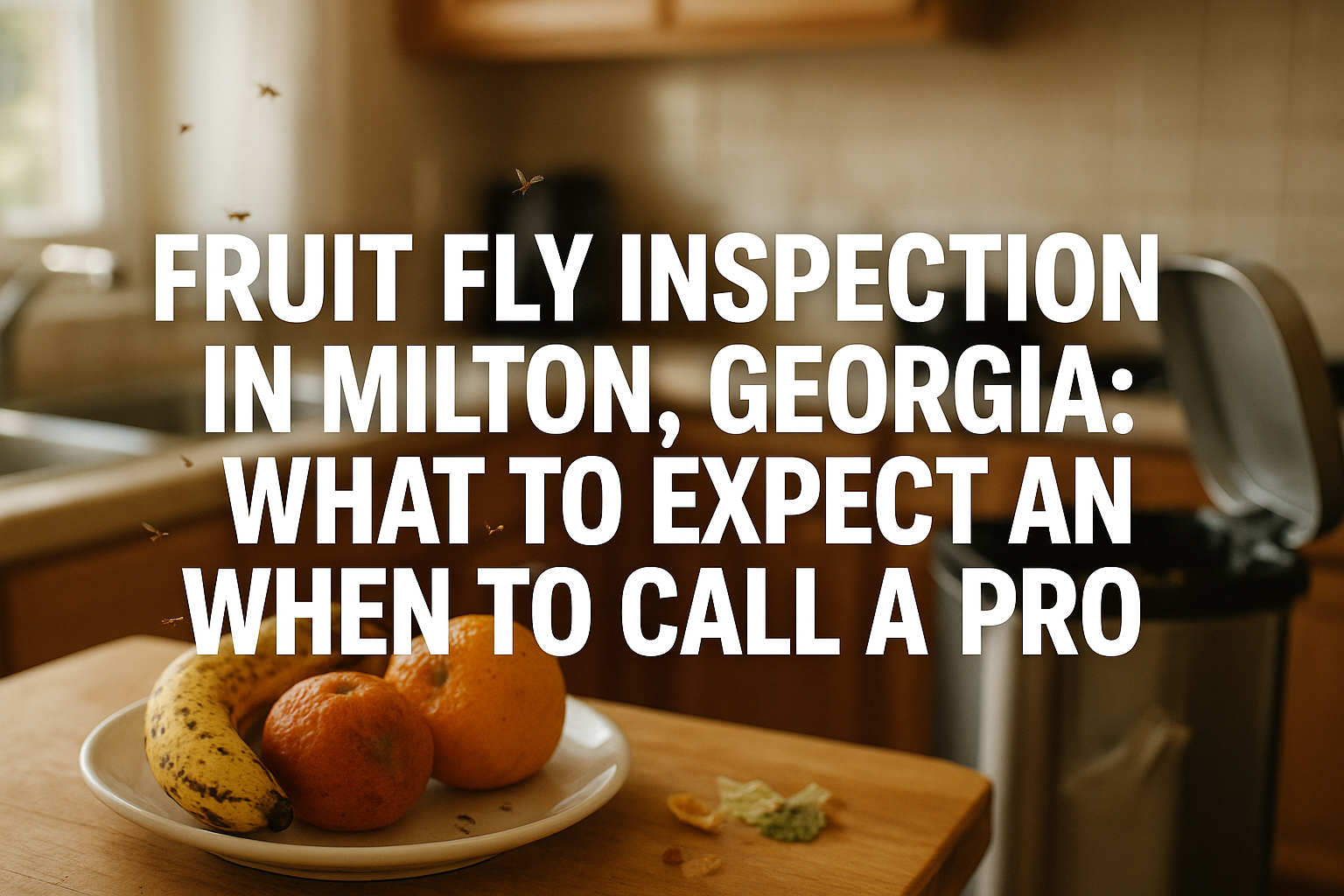Don’t Let Spiders Take Over Your Sandy Springs Home
If you live or work in Sandy Springs, you know how easy it is for spiders to become uninvited guests. With our warm weather and leafy surroundings, spiders settle in just as easily as we do. That’s why many homeowners schedule a spider inspection Sandy Springs GA to stay ahead of infestations. It doesn’t matter if your place is a historic charmer in Riverside or something brand-new in Hammond Hills—spiders can slip right in, especially if there’s clutter, easy meals (like other bugs), or even the smallest gap around doors and windows.
Most spiders won’t bother you, but let’s be real: finding webs everywhere, or worse, coming face-to-face with a brown recluse or a black widow, makes it a whole different ball game. The risk just isn’t worth it—especially if your home has kids or pets running around. That’s why regular, professional spider inspections are such a smart move in our area.
So, what should you expect when it comes to the cost? In Sandy Springs, a comprehensive spider inspection usually lands somewhere between $100 and $175. The price depends on things like how big your property is, how serious the infestation might be, and whether you’re just looking for an inspection or also need help with removal and prevention. It’s money well spent, especially when you consider the peace of mind that comes from keeping the really dangerous spiders at bay.
If you’re finding more webs than you’re comfortable with or just want to be sure your family is protected, take a closer look at your options. We’re breaking down what goes into these inspections, what the different price points cover, and most importantly, what you can do to stop spiders from making themselves at home. Keep reading—everything you need to know is right here, with advice tailored for Sandy Springs homeowners who take pest control seriously.
What Impacts the Cost of Spider Inspections in Sandy Springs?
If you’re thinking about scheduling a spider inspection Sandy Springs GA, you’re probably wondering how much you’ll have to budget. The short answer: it varies, and with good reason. Let’s walk through what actually drives those numbers up or down so you know exactly what to expect—no surprises.
- Property Size Matters: Got a bigger house or a sprawling property in Glen Errol? Or maybe you manage a large office in City Springs? The more space to cover, the longer it takes to do a thorough job, which means the price climbs. Smaller homes or condos will fall on the lower end of the scale.
- Severity of the Infestation: A couple stray webs is one thing; clusters of webs, egg sacs, or a known infestation of dangerous species bumps everything up a notch. Heavier infestations demand a more careful (and time-consuming) approach.
- Type of Inspection or Treatment: Some folks want a basic inspection, just to make sure things are clear. Others opt for bundled services that include treatment right away. If you need special tools or targeted solutions (think: dealing with brown recluses hiding in tricky places), that specialty can mean a higher cost.
- Old vs. New Construction: Older homes often have more little nooks, crannies, or gaps for spiders to get inside. They’re trickier to inspect and sometimes more work to treat than modern, well-sealed homes, so pricing gets adjusted accordingly.
To put it in perspective, a routine spider inspection Sandy Springs GA for a fairly straightforward case might set you back about $100—or just a bit more for the average Sandy Springs homeowner. If the job involves a large property or the spider situation is serious, pricing can rise to $175 or even higher. Should you need treatment after the inspection, especially if advanced methods are needed, full costs can stretch up to $400.
At the end of the day, a professional inspection is about peace of mind and protecting your investment—so it’s worth knowing precisely what you’re paying for and why. Sandy Springs properties are unique, so a one-size-fits-all price just isn’t realistic. Every penny covers local expertise, targeted solutions, and your comfort at home or at work.
What Impacts the Cost of Spider Inspections in Sandy Springs?
If you’re thinking about scheduling a spider inspection Sandy Springs GA, you’re probably wondering how much you’ll have to budget. The short answer: it varies, and with good reason. Let’s walk through what actually drives those numbers up or down so you know exactly what to expect—no surprises.
- Property Size Matters: Got a bigger house or a sprawling property in Glen Errol? Or maybe you manage a large office in City Springs? The more space to cover, the longer it takes to do a thorough job, which means the price climbs. Smaller homes or condos will fall on the lower end of the scale.
- Severity of the Infestation: A couple stray webs is one thing; clusters of webs, egg sacs, or a known infestation of dangerous species bumps everything up a notch. Heavier infestations demand a more careful (and time-consuming) approach.
- Type of Inspection or Treatment: Some folks want a basic inspection, just to make sure things are clear. Others opt for bundled services that include treatment right away. If you need special tools or targeted solutions (think: dealing with brown recluses hiding in tricky places), that specialty can mean a higher cost.
- Old vs. New Construction: Older homes often have more little nooks, crannies, or gaps for spiders to get inside. They’re trickier to inspect and sometimes more work to treat than modern, well-sealed homes, so pricing gets adjusted accordingly.
To put it in perspective, a routine spider inspection Sandy Springs GA for a fairly straightforward case might set you back about $100—or just a bit more for the average Sandy Springs homeowner. If the job involves a large property or the spider situation is serious, pricing can rise to $175 or even higher. Should you need treatment after the inspection, especially if advanced methods are needed, full costs can stretch up to $400.
At the end of the day, a professional inspection is about peace of mind and protecting your investment—so it’s worth knowing precisely what you’re paying for and why. Sandy Springs properties are unique, so a one-size-fits-all price just isn’t realistic. Every penny covers local expertise, targeted solutions, and your comfort at home or at work.
What Makes Spiders Thrive in Sandy Springs?
If you’ve spent any time in Sandy Springs, you already know we’ve got picturesque greenery and a whole lot of rainy, comfortable days. Turns out, that’s exactly the recipe spiders love. The higher humidity and our lush yards keep insects active nearly year-round, meaning more meals for spiders—and more reasons for them to stick around your property.
Living in neighborhoods like North Springs or near Spalding Woods? Houses there tend to have crawlspaces, old basements, or construction features that give spiders easy hiding spots. If your home backs up to wooded areas or is close to the Chattahoochee River or Abernathy Greenway Park, you’re probably battling extra moisture too. All that dampness and shade draws even more insect activity, which in turn ramps up the spider presence in your house or yard.
- Older, vented crawlspaces tend to stay dark and damp, creating the perfect home for spiders and their prey.
- Basements in flood-prone areas often harbor extra moisture—another spider magnet.
- Modern homes keep things tighter but still see webbing pop up under exterior eaves, in attic vents, or in overgrown landscaping.
When you combine all these factors, it’s easy to see how spider problems in Sandy Springs can be influenced by even minor details—whether it’s the age of your home, what’s planted around your foundation, or even the season. Treatments for homes with heavy moisture or tricky crawlspaces usually take more time and specialized products, which adds to service pricing. And don’t forget local weather: good rainstorms and those big spring and fall bug blooms will sometimes spike spider issues seemingly overnight.
If you want to keep things under control, it helps to know how your exact property and neighborhood play a part. Up next, we’ll break down how these details directly affect spider risk—and what that means for your wallet.
Keep Spiders from Taking Over—Simple Moves That Save You Money
No one likes sharing their Sandy Springs home with eight-legged guests, and dealing with a major spider issue can cost way more than a little prevention. The good news is, you can keep those webs (and the bills) under control with just a bit of effort around the house.
- Declutter your spaces: Spiders love quiet spots where they won’t be disturbed—think attics, basements, garages, and especially storage-heavy neighborhoods like Mount Vernon Woods. Clear away boxes and unused items regularly, and don’t let things pile up.
- Take down webs as you see them: Sweeping away spider webs from corners, ceilings, and around windows not only gets rid of spiders, it also encourages them to move elsewhere—hopefully outdoors.
- Seal up the small stuff: Look around doors, windows, and your foundation for tiny cracks and gaps. A bit of caulk or weatherstripping can make a huge difference in stopping spiders (and the bugs they hunt) from slipping inside.
- Fix other pest problems quickly: Spiders only stick around where there’s food. If you notice ants, flies, or other bugs showing up, get ahead of them fast. You’ll knock down the spider menu—and help keep your house clean.
- Yard work that works: Trim shrubs and tree branches back from your walls, clear out leaf piles, and keep the lawn neat. Dense landscaping right next to your house acts like a front door for pests.
- Shine the right lights: Too-bright outdoor lights attract insects, which draw in spiders. Opt for yellow-toned bulbs or turn off unneeded lights at night to keep bugs (and webs) away from entry points.
- Get professional eyes on your home: Having a trusted local pest control pro do a seasonal inspection can catch issues before they snowball into big expenses. Early detection means you spend less and sleep easier.
With a little routine and the right habits, you’ll enjoy a much more comfortable, safe, and bug-free home all year in Sandy Springs. Ready to kick your prevention up a notch? Check out our quick seasonal checklist next!
Why Timing Matters for Spider Inspections in Sandy Springs
If you’ve ever spotted webbing in the corners or a scurrying spider in your Sandy Springs home, you know it’s an urgent wake-up call. But when you choose to handle those spiders makes a bigger difference than most folks realize. Tackling inspections at just the right time not only gives you more effective spider control, but it can also keep costs down and headaches to a minimum.
Here’s the deal: inspections done in late winter or early spring are a game changer. Spiders haven’t started breeding yet, so their numbers are low and easier to manage. Catch them before they multiply, and you save yourself extra treatments down the road. Most people call us after seeing webs pop up in March, April, or May—but by that time, spiders could already be settling in for the season. Getting ahead means one really thorough treatment can do the trick, without repeat visits or extra expense.
Don’t overlook fall, either. Once the temperatures drop, spiders in Sandy Springs do what anyone else would—they look for warmth. That’s when you’ll notice a spike in webs near garages, basements, and especially in homes bordering wooded areas or green spaces. An inspection and quick sweep then catches newcomers before they can make themselves too comfortable inside your walls.
Winter might seem quiet on the spider front, and that’s not just your imagination. Spider activity is low, and pest professionals often offer off-season rates, so prevention is budget-friendly and easy. If you want to put up a solid defense for spring, winter is the smart time for sealing cracks, clearing clutter, and keeping those eight-legged visitors outside where they belong.
- Inspections in late winter or early spring: pre-breeding, easier to control, fewer treatments needed
- Fall: high indoor migration, noticeable increase in webs
- Winter: best for proactive prevention and savings
Even if spiders haven’t shown up yet, scheduling an inspection before you see webs is the surest way to stay a step ahead. Most Sandy Springs homeowners wait for visible signs, but the ones who act early enjoy peace of mind all season long. Stay tuned for a simple checklist and a seasonal breakdown to help you stay proactive.
Don’t Let Spiders Take Over—Act Today
Why wait until you spot webs in every corner or catch spiders scurrying across the floor? If you value your peace of mind and want to keep your Sandy Springs home or business spider-free, it’s time to call in the local pros. Reach out at 877-3718-5196 or visit anthempest.com for your free, no-strings-attached inspection and assessment.
Our licensed team knows exactly what to look for and will answer every question you have right up front. You’ll get clear recommendations and a prevention plan tailored for you—plus, you might be surprised just how affordable staying pest-free really is. Give yourself one less thing to worry about. Book your assessment today, and relax knowing your property is in great hands.
Spider Inspection Questions Sandy Springs Folks Ask Us All the Time
If you’ve been noticing spider webs popping up in new corners every week, or you’re constantly vacuuming and they just keep coming back, you might wonder if it’s time to call a pro. The truth is, when you spot lots of webs, egg sacs, or even suspect you’ve seen something dangerous (think black widow or brown recluse), that’s your cue to bring in an expert for a real assessment—especially if your own fixes don’t seem to keep them away for long.
Most of the spiders you’ll run into in Sandy Springs won’t hurt anything but a few bugs. Still, we do have some nastier types around here, like black widows and brown recluses, and those can cause health scares. If you’re not sure what’s crawling in your basement, let a professional figure it out for peace of mind.
Wondering how much time you’ll spend waiting on a spider inspection? Normally, our walkthrough takes between 45 to 90 minutes, but bigger homes or places with lots of spider activity might take just a bit longer. We check all the nooks and crannies, identify any species present, look for things attracting them to your place, and share tailored tips on keeping spiders out for good. Of course, if you want to know about treatment options, we’ll give you a quote, too.
If you want to get ahead of the game before your appointment, here are a few quick things you can do: tidy up clutter, vacuum webs and corners, seal any obvious openings, and fix leaks or damp spots (spiders love moisture).
People ask us about pesticides—a lot. Unless we find a full-blown infestation or spot a dangerous spider, we stick with prevention and non-chemical fixes first. Safety is top priority, especially for households with kids and pets, so all products we use, if needed, meet strict EPA standards and are used by the book.
Finally, is a follow-up necessary? If your home is older, or you’re fighting a stubborn spider population, we may suggest a follow-up treatment or routine check-in. That way, you can relax knowing things stay under control all year round.





